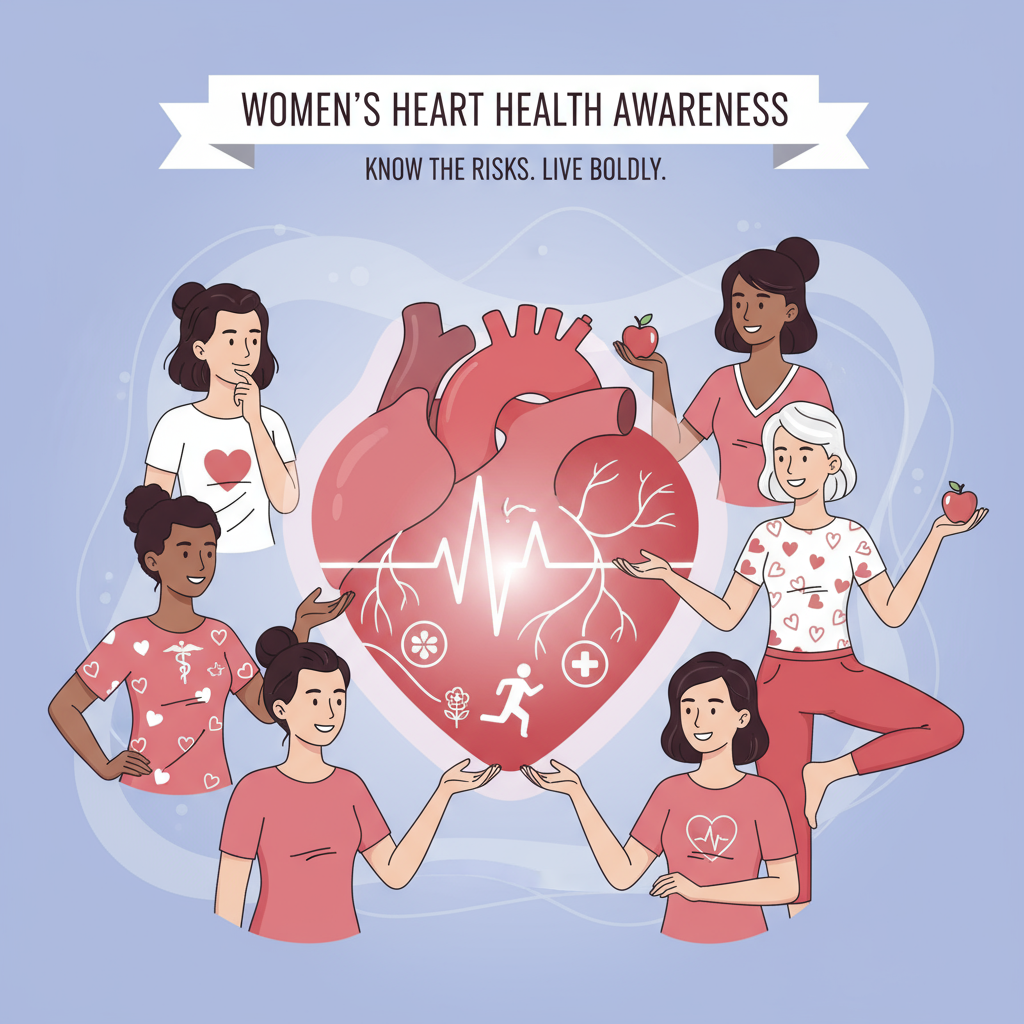Gender-Specific Differences in Heart Disease: Why Women Are at Risk
Heart disease remains the leading cause of death for women worldwide, yet it remains widely misunderstood and often underdiagnosed. Despite significant medical advances, many women continue to be unaware of their risk factors and the unique ways heart disease manifests in their bodies.
The Overlooked Health Crisis
In recent decades, epidemiological data have highlighted the high incidence of cardiovascular (CV) disease (CVD) in women. The prevailing belief that women are a low-risk population now appears to require reassessment. Women tend to be more vulnerable to unhealthy behaviors, and risk factors affect CV morbidity and mortality differently between genders.
Sex-Based Differences in Traditional Heart Disease Risk Factors and Recommendations
Diabetes:
- Risk: Women with diabetes are at a much higher risk of heart disease, heart failure, and strokes compared to men. They also have higher death rates from heart attacks and lower chances of getting treatments like surgery.
- Advice: Women with diabetes should closely manage their heart health with exercise and healthy habits.
High Blood Pressure:
- Risk: High blood pressure is more common in women over 60 and harder to control compared to men.
- Advice: Women should control their blood pressure with a healthy diet, exercise, and medications if needed.
Cholesterol Problems:
- Risk: High cholesterol is a bigger risk factor for heart disease in women than men. Statins (cholesterol-lowering drugs) can help but may cause side effects like muscle pain and higher risk of diabetes in women.
- Advice: Women should take statins as prescribed, even though more research is needed, and keep cholesterol in check.
Obesity:
- Risk: Obesity increases heart disease risk more in women than in men.
- Advice: Women should aim for regular exercise (60-90 minutes most days) and a healthy diet to maintain or lose weight.
Physical Inactivity:
- Risk: Women are more likely to be inactive than men, which increases heart disease risk.
- Advice: Women should aim for at least 150 minutes of moderate exercise or 75 minutes of vigorous exercise per week.
Smoking:
- Risk: Smoking raises the risk of heart disease more in women than men, especially in older women.
- Advice: Women should avoid smoking and secondhand smoke. Quitting smoking can significantly reduce health risks.
Nontraditional Heart Disease Risk Factors in Women
Menopause and CVD:
Before menopause, women are generally protected from cardiovascular disease (CVD), but this protection decreases after menopause due to the drop in estrogen. While estrogen benefits blood vessels, hormone replacement therapy (HRT) does not reduce heart disease risk in postmenopausal women, though it helps manage menopausal symptoms.
Advice: Women should avoid smoking, exercise for at least 150 minutes per week, eat a diet rich in fruits, vegetables, whole grains, and fish twice a week, and maintain a BMI <25 or waist size <35 inches.
Pregnancy-Related Disorders and CVD Risk:
Pregnancy-related disorders, such as preterm delivery, hypertensive conditions, gestational diabetes, and postpartum weight gain, increase long-term cardiovascular risks. Preterm delivery and hypertensive pregnancy complications raise the risk of heart disease and stroke, while gestational diabetes significantly increases the likelihood of developing type 2 diabetes and cardiovascular issues.
Heart disease in women is a complex, multifaceted health challenge. By understanding unique risk factors, recognizing symptoms, and adopting preventive strategies, women can take proactive steps toward maintaining heart health.

